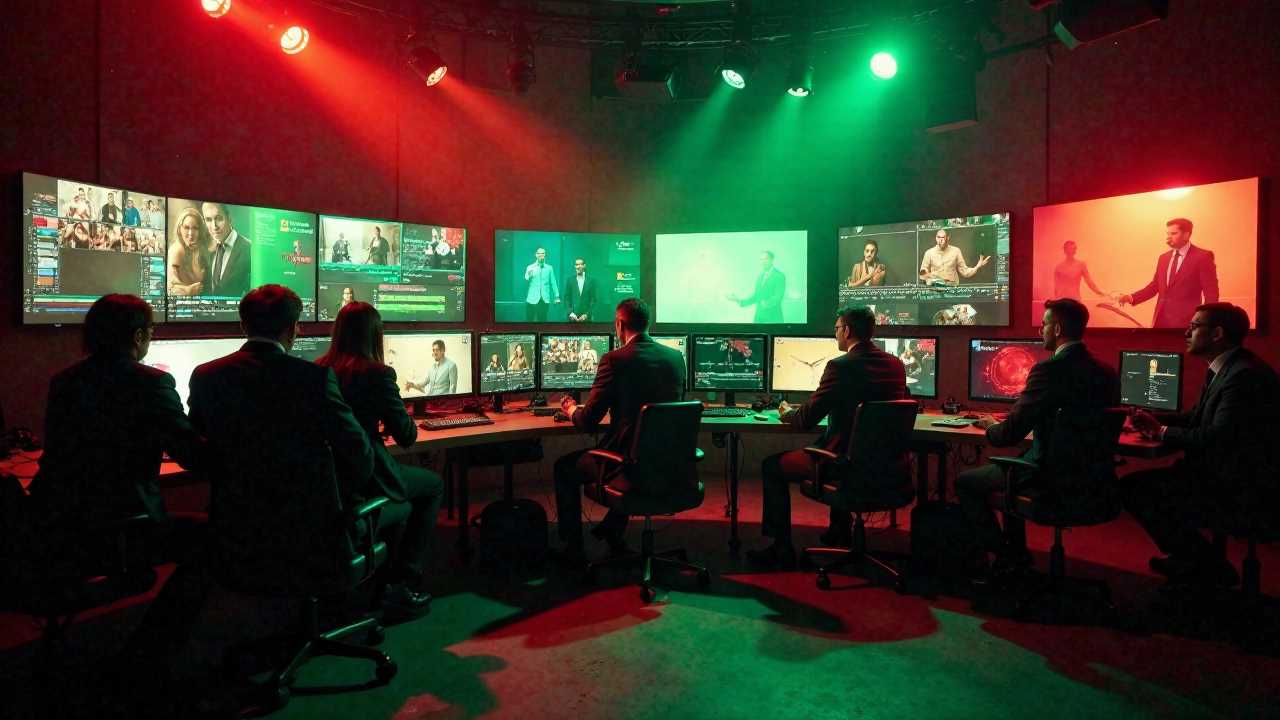
Understanding Film Editing Software Users
Film editing software users play a pivotal role in the creation of cinematic masterpieces. These individuals, often referred to as editors, are responsible for assembling raw footage into a coherent and engaging narrative. Their expertise in utilizing advanced post-production tools is what transforms a collection of scenes into a polished film. In Hollywood, where the stakes are high and the competition is fierce, the right software can make all the difference in achieving a compelling story.
The Role of Hollywood Filmmakers in Film Editing
Hollywood filmmakers are visionaries who rely heavily on film editing software to bring their stories to life. They collaborate closely with editors to ensure that the final product aligns with their creative vision. The editing process is not merely about cutting and pasting scenes; it involves a deep understanding of visual storytelling. Filmmakers often provide editors with specific instructions on pacing, tone, and emotional impact, which can only be effectively realized through sophisticated editing suites.
Choosing the Right Editing Suites
Selecting the right editing suite is crucial for film editing software users. There are numerous options available, each with its unique features and capabilities. Popular choices among Hollywood filmmakers include Adobe Premiere Pro, Final Cut Pro, and Avid Media Composer. These platforms offer a range of tools that facilitate cinematic editing, allowing users to manipulate video and audio with precision.
When evaluating editing suites, consider factors such as user interface, compatibility with other software, and the availability of plugins. An intuitive interface can significantly enhance workflow efficiency, while compatibility ensures seamless integration with other film industry software. Additionally, plugins can expand the functionality of the software, providing editors with more creative options.
Post-Production Tools That Enhance the Editing Process
The editing process is supported by various post-production tools that enhance the overall quality of the film. Color grading software, sound design applications, and visual effects tools are essential components of a comprehensive editing toolkit. Color grading software, such as DaVinci Resolve, allows editors to manipulate the color palette of a film, creating mood and atmosphere that aligns with the narrative.
Sound design applications, like Pro Tools, enable editors to craft immersive audio experiences that complement the visual elements. Visual effects tools, such as Adobe After Effects, provide editors with the ability to incorporate stunning effects that elevate the storytelling. By mastering these post-production tools, film editing software users can significantly enhance the viewer's experience.
The Art of Cinematic Editing
Cinematic editing is an art form that requires a keen eye for detail and a deep understanding of narrative structure. Editors must be adept at pacing, ensuring that scenes flow seamlessly from one to the next. This involves not only cutting footage but also selecting the right shots that convey the intended emotions. The use of transitions, such as fades and cuts, can dramatically affect the film's rhythm and impact.
Moreover, editors must consider the audience's emotional journey throughout the film. This involves strategically placing moments of tension, relief, and surprise to keep viewers engaged. The ability to manipulate time through editing—such as using flashbacks or montages—can also enhance the storytelling experience.
Visual Storytelling: A Key Component of Film Editing
Visual storytelling is at the heart of effective film editing. Editors must be skilled in selecting shots that not only advance the plot but also convey deeper themes and emotions. This requires a thorough understanding of cinematography, as the choice of angles, lighting, and composition can significantly influence the viewer's perception.
Incorporating visual metaphors and symbolism can add layers of meaning to a film. Editors collaborate with directors and cinematographers to ensure that the visual elements align with the narrative's emotional core. By mastering the principles of visual storytelling, film editing software users can create films that resonate with audiences on a profound level.
The Future of Film Editing Software in Hollywood
As technology continues to evolve, so too does the landscape of film editing software. Innovations such as artificial intelligence and machine learning are beginning to play a role in the editing process. These advancements can assist editors in tasks such as organizing footage, suggesting cuts, and even generating rough edits. While these tools can enhance efficiency, the human touch remains irreplaceable in the creative process.
Hollywood filmmakers will continue to rely on skilled editors who understand the nuances of storytelling. The combination of advanced software and artistic vision will shape the future of cinematic editing, ensuring that films remain a powerful medium for storytelling.
Mastering Film Editing Software for Success
In the competitive world of Hollywood filmmaking, mastering film editing software is essential for success. Film editing software users must be proficient in utilizing advanced post-production tools, understanding cinematic editing techniques, and embracing the principles of visual storytelling. By doing so, they can create compelling narratives that captivate audiences and stand the test of time. The journey of mastering these tools is not just about technical skills; it is about harnessing creativity and passion to bring stories to life on the big screen.
 SportsHollywoodLifestyleFashionHome & GardenTrendsPrivacy PolicyTerms And Conditions
SportsHollywoodLifestyleFashionHome & GardenTrendsPrivacy PolicyTerms And Conditions
